Your body talks to you. Sometimes it’s a soft whisper, other times it’s practically yelling.
You know those days when you notice stubborn weight around your belly, your cheeks feel flushed for no reason, or you’re getting random bruises and you don’t even remember bumping into anything?
Yep, that’s your body trying to tell you something.
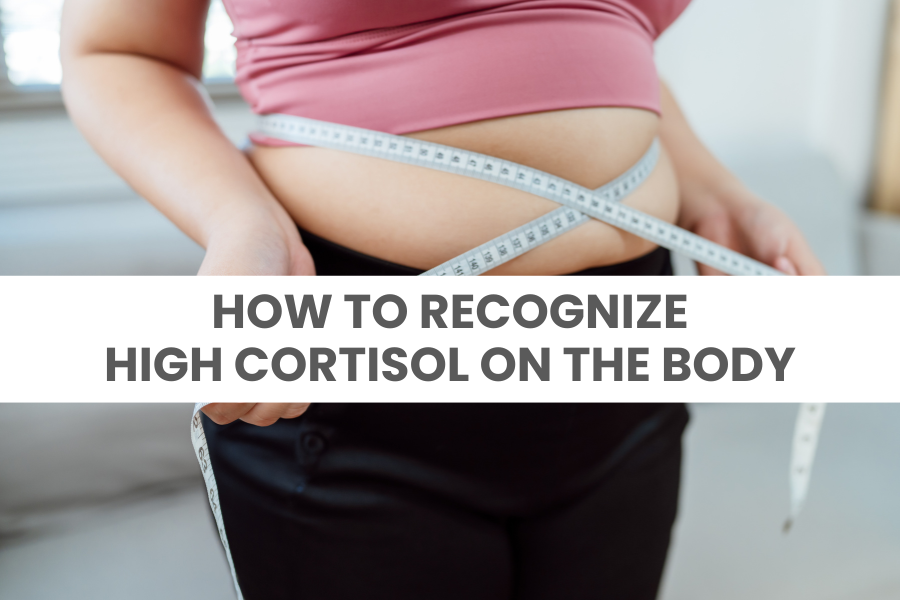
This post is all about the visible signs of high cortisol.
One of the biggest hormonal messengers behind these physical shifts is cortisol — your body’s primary stress hormone.
While it plays a crucial role in energy regulation, inflammation control, and the fight-or-flight response, chronically elevated cortisol levels can lead to a series of telltale signs that something deeper is out of balance.
Whether due to chronic stress, adrenal disorders, or conditions like Cushing syndrome, high cortisol doesn’t just affect your internal systems — it shows up on your body.
Let’s talk about the most common and recognizable physical symptoms of high cortisol so you can better understand what your body may be trying to tell you—and how to support yourself through it.
7 Visible Signs of High Cortisol
🌕 #1 – Moon Face
One of the most recognizable signs of high cortisol is a rounded, puffy face often referred to as “moon face.” This swelling is the result of abnormal fat distribution, driven by cortisol’s impact on adipose (fat) tissue. Rather than storing fat evenly, the hormone encourages it to collect in specific areas like the cheeks and jawline.
You might also notice:
- A flushed or reddened appearance, called facial plethora
- Worsening acne or oily skin, even into adulthood
- A generally swollen look that doesn’t improve with sleep or hydration
This facial change can significantly affect self-esteem, especially when it develops quickly or without obvious weight gain elsewhere on the body (Mishra, Lause et al.).
🐃 #2 – Buffalo Hump
A less talked-about but equally significant physical change is the development of a buffalo hump — a noticeable pad of fat that forms at the base of the neck or upper back, known medically as the dorsocervical spine.
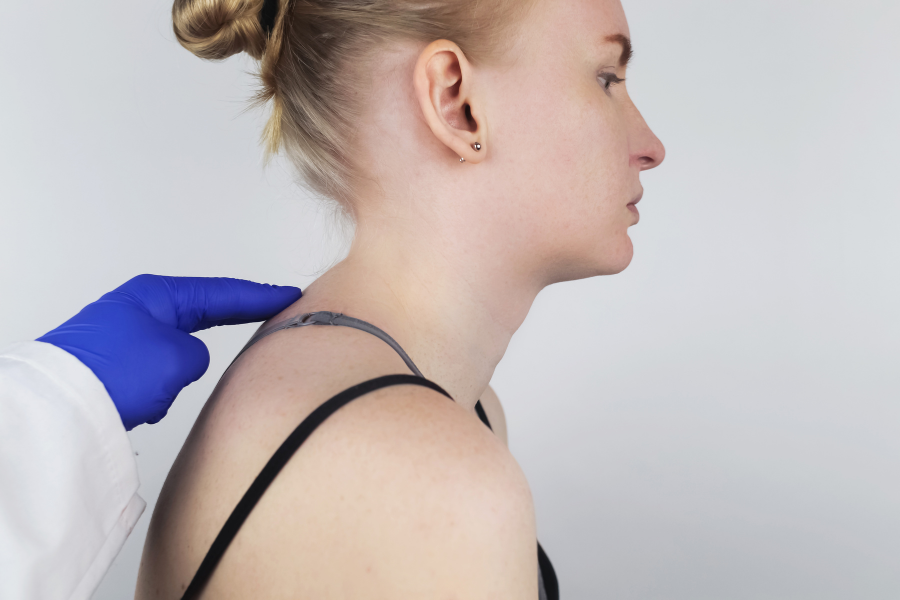
This occurs as a result of elevated cortisol levels, which promote fat redistribution to specific areas of the body, particularly the central trunk and upper back. While many people mistakenly attribute this change to poor posture, aging, or inactivity, it can actually be a hallmark sign of conditions like Cushing’s syndrome.
When accompanied by other symptoms of cortisol imbalance, the appearance of a buffalo hump is a red flag that warrants a conversation with a healthcare provider. (Sanford, Crafa et al.).
🧁 #3 – Central (Abdominal) Obesity
If you’ve ever heard of the “lemon on a stick” appearance, you’re already familiar with how cortisol causes truncal obesity. This means the midsection gains weight, while the arms and legs may remain relatively thin. (Phillips & Weightman)
Why it happens:
- Cortisol increases appetite and cravings—especially for sugar and fat
- It promotes insulin resistance, making fat storage more efficient
- It encourages visceral fat build-up around organs, increasing health risks
Unlike typical weight gain, this pattern is hormonally driven and resistant to standard dieting or exercise, which can feel discouraging without a proper diagnosis.
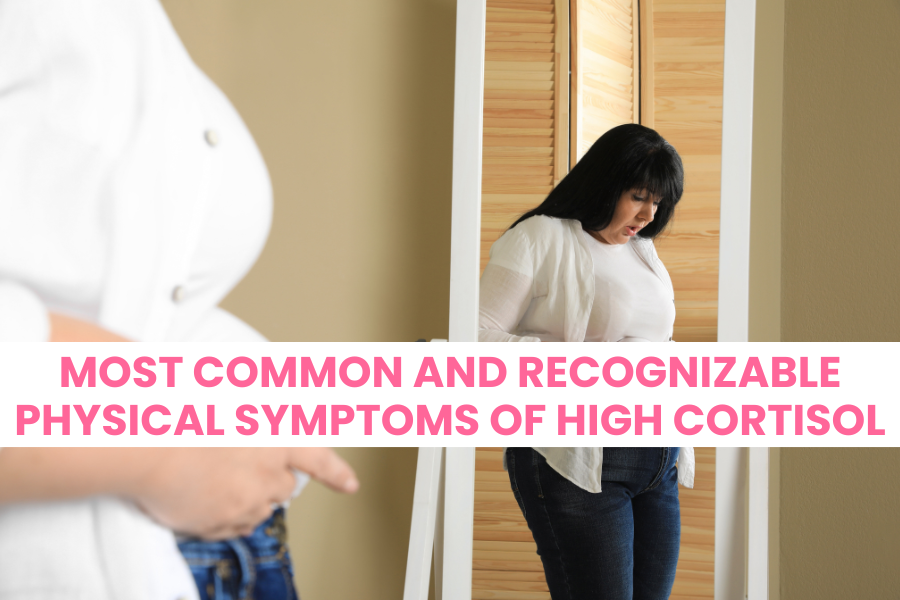
💜 #4 – Skin Thinning, Easy Bruising, and Purple Stretch Marks
Excess cortisol can have a profound impact on the skin’s structure by:
- Inhibiting fibroblast activity
- Reducing collagen synthesis
- Slowing wound healing
As a result, individuals with elevated cortisol levels often experience:
- Thin, paper-like skin
- Frequent, unexplained bruising
- Delayed healing from even minor cuts or abrasions
A particularly distinctive sign of cortisol-related skin changes is the appearance of purple striae (stretch marks). These marks typically:
- Appear on the abdomen, thighs, breasts, or buttocks
- Are wider than typical stretch marks
- Have a deep purple or reddish hue
- Tend to be more persistent and pronounced
Unlike stretch marks caused by pregnancy or weight fluctuations, these are a direct result of hormonal dysfunction and are strongly associated with conditions like Cushing’s syndrome (Lause et al., Phillips & Weightman).
🧔🏽 #5 – Facial and Body Hair Growth (Hirsutism)
Women with elevated cortisol often notice increased facial and body hair growth—a condition known as hirsutism. This symptom stems from the interplay between cortisol and androgen (male hormone) production in the adrenal glands.

Common changes include:
- Coarse hair along the jawline, chin, upper lip, chest, or abdomen
- Oily skin or adult-onset acne
- Hair loss on the scalp or thinning edges
These symptoms can overlap with conditions like polycystic ovary syndrome (PCOS), but when driven by adrenal imbalance, they require a different treatment approach (Lovett & Woodmansee).
💪🏽 #6 – Muscle Wasting in the Arms and Legs
Despite gaining fat in certain areas, people with high cortisol levels may actually lose muscle mass in the shoulders, thighs, and upper arms. This condition is known as proximal muscle wasting.
This happens because cortisol:
- Increases protein breakdown
- Inhibits muscle repair and regeneration
- Contributes to physical weakness and fatigue
You may notice your limbs look thinner and feel weaker, even as your weight stays the same or increases. Everyday activities like climbing stairs or carrying groceries may become more difficult.
🔴 #7 – Facial Redness (Plethora)
Facial redness, or plethora, occurs when cortisol causes increased blood flow and capillary dilation in the facial region. It’s most noticeable in the cheeks and can give the appearance of constant blushing or a flushed look.
While harmless on its own, this sign often accompanies moon face and helps distinguish hormone-related redness from simple skin irritation or rosacea.
🧠 Why It Matters: The Link Between Appearance and Internal Health
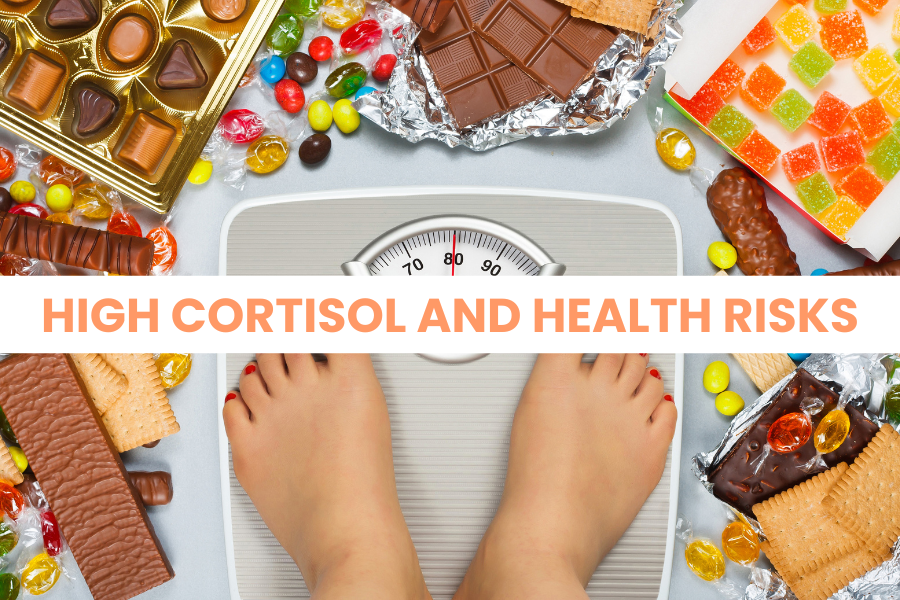
These visible signs of high cortisol aren’t just surface-level concerns—they’re often the first indicators of deeper health issues. Prolonged cortisol elevation can increase your risk of:
- Type 2 diabetes
- High blood pressure
- Immune system suppression
- Memory and cognitive decline
- Bone loss
By recognizing the visible signs of hormonal imbalance, you can seek medical help earlier, get tested for cortisol levels, and begin treatment before the condition worsens.
🔍 When to See a Doctor
If you’re experiencing several of the symptoms above, especially in combination, it’s important to consult with a healthcare provider or endocrinologist. A physical exam, blood tests, and imaging may be necessary to confirm the root cause and develop a treatment plan.
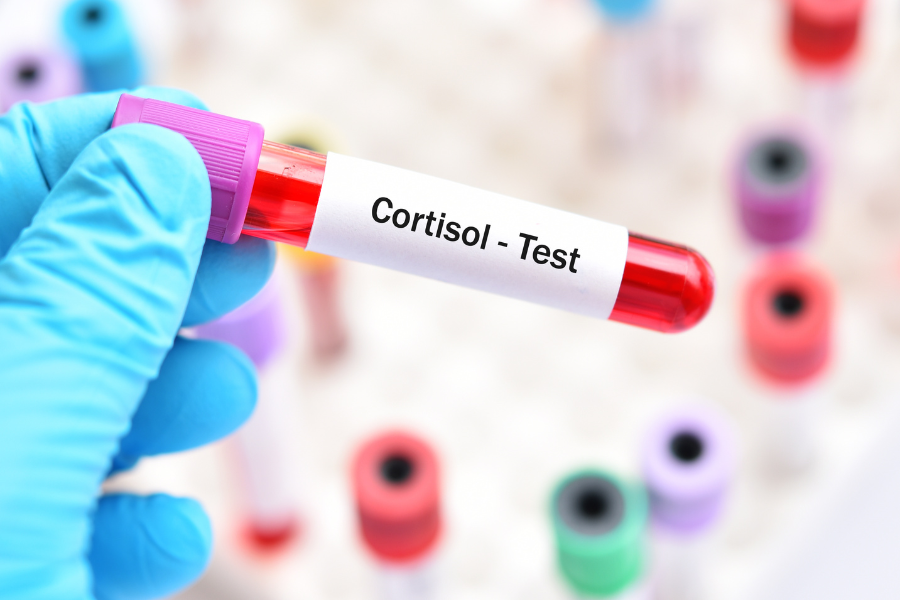
💡 Final Thoughts: Tune In, Don’t Brush Off
Hormonal health isn’t just about how you feel—it’s also about how your body shows signs of imbalance. Paying attention to what your body is telling you can empower you to seek answers and find solutions sooner.
If you’re navigating chronic stress or suspect something more serious like Cushing syndrome, know that you’re not alone—and help is available.
Pay attention. Ask questions.
Hormone imbalances are treatable, and recovery is possible with the right support and care.

This post is all about the visible signs of high cortisol.
+ show Comments
- Hide Comments
add a comment